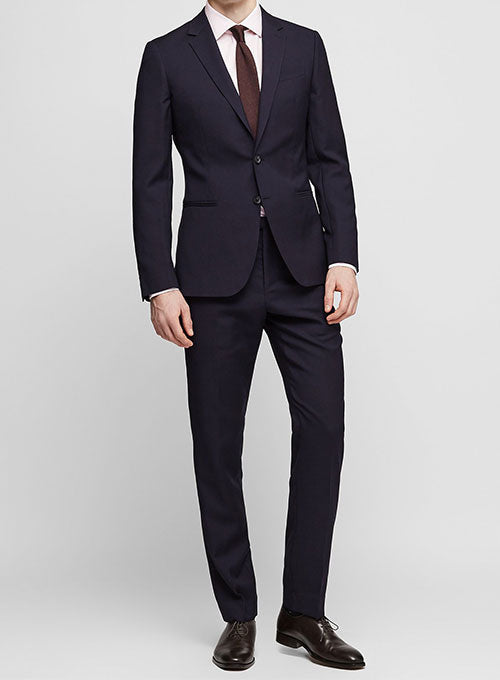Custom Suits Perth: Stand Out with a Made-to-Measure Suit
Custom Suits Perth: Stand Out with a Made-to-Measure Suit
Blog Article
Comprehending the Tailoring Process: From Textile Option to Last Fitting for the Ideal Wardrobe
The tailoring process is an intricate interaction of art and scientific research, starting with the crucial choice of fabric selection and finishing in the specific adjustments of last fittings. Each textile type brings one-of-a-kind qualities that affect not just the visual appeal but also the garment's durability and suitability for numerous events.
Relevance of Material Choice
Choosing the ideal textile is crucial in the tailoring procedure, as it directly affects the comfort, toughness, and overall visual of the final garment. The choice of fabric sets the foundation for the garment's efficiency, capability, and design. Different materials have one-of-a-kind homes, such as breathability, stretch, and weight, which can significantly influence how the garment drapes and fits the body.

A tailored piece made from an appropriate fabric not just showcases craftsmanship yet additionally boosts the user's confidence. Understanding the subtleties of material selection is paramount for any customizing endeavor. It guarantees that the last item not only satisfies the aesthetic wishes of the client yet likewise lines up with practical needs, thus achieving a harmonious equilibrium in between kind and feature in the customized wardrobe.
Sorts Of Fabrics and Their Uses
Understanding the different sorts of materials readily available is vital for making educated choices throughout the customizing process. Each textile has distinct attributes that determine its viability for details garments and events.
Its flexibility permits it to be customized into everything from t-shirts to gowns. Its all-natural flexibility aids garments preserve shape over time.
Silk shows deluxe and is light-weight, making it best for eveningwear and delicate shirts; however, it needs careful handling because of its fragility. Bed linen, with its distinctive coating, is a preferred option for cozy climates, giving a crisp and airy feel, but it wrinkles quickly, which might affect the garment's appearance.
Artificial textiles, such as polyester and nylon, deal toughness and resistance to wrinkles, making them suitable for daily wear and energetic garments. Recognizing these material types and their properties permits far better decision-making, making certain that each customized item not just fits well but also aligns with the designated objective and event.
The Tailoring Strategies Clarified
The art of tailoring counts on a range of methods that transform textile right into well-fitted garments. Central to this procedure is pattern drafting, where a tailor creates templates based upon the client's dimensions and desired design. This first action makes certain that the garment will fit the wearer correctly prior to any kind of cutting happens.
When patterns are developed, reducing techniques come right into play. Precision is paramount as errors can bring about misfitting garments. Tailors often use numerous cutting approaches, such as single-layer cutting for intricate layouts and multiple-layer reducing for effectiveness on common patterns.
Basting is another important technique, permitting tailors to momentarily sew material pieces with each other for an initial fitting (custom suits perth). This method provides the opportunity to examine the check this site out drape and overall shape prior to last sewing
Seaming strategies, consisting of flat-felled seams and French joints, enhance the garment's toughness and aesthetic charm. Tailors likewise employ strategies such as interfacing and cushioning to give framework and form to particular areas, like collars and shoulders.
Lastly, ending up strategies, consisting of hemming and side finishing, guarantee the garment's longevity while giving a refined look. With each other, these methods form the foundation of reliable customizing, leading to beautiful, tailor-made apparel.

Fitting Adjustments and Considerations
After the first customizing methods have been used and the garment is created, fitting adjustments end up being vital to attaining the excellent fit. These changes address numerous elements of the garment, guaranteeing it contours useful source to the wearer's body shape and boosts total look.

The surge of pants is another critical factor; it needs to sit conveniently over the hips without causing discomfort, permitting convenience of motion. Hemming sizes for both pants and skirts need to mirror the wearer's favored design while valuing proportions.
Additionally, interest ought to be provided to the back of the garment, ensuring that there are no unpleasant pulls or excess textile - tailor tuxedos perth. Each adjustment should be diligently considered, as even small alterations can considerably influence the overall fit and visual of the customized piece, ultimately causing a closet that exhibits self-confidence and refinement
Preserving Your Tailored Clothing
Constantly comply with the treatment tag directions, which may advise completely dry cleansing for fragile textiles or equipment cleaning for even more resilient products. Prevent regular laundering, as this can put on down the material and alter the garment's shape.
Storage is equally crucial; use cushioned wall mounts for jackets and layers to maintain shoulder framework, and shop pants folded nicely or hung to avoid creasing. Protect garments from direct sunlight, which can discolor shades and damages fibers.
Furthermore, routine examinations for minor repair services can avoid bigger issues. Inspect for loosened buttons, fraying joints, or signs of moth damage, addressing these troubles promptly to keep the garment's stability.
Finally, take into consideration seasonal turning. Wearing tailored pieces in moderation allows materials to recoup, extending their lifespan. By applying these upkeep strategies, you can make certain that your customized garments remain as beautiful as the day you first used them, boosting your optimal wardrobe for several years to come.
Conclusion
The tailoring procedure, including fabric choice, competent techniques, and precise suitable changes, plays a critical duty in producing garments that boost both comfort and style. Each phase adds to the total efficiency of the final product, making sure that apparel not only fits well yet likewise shows private identity. Comprehending the relevance of upkeep expands the life of tailored garments, solidifying their value in a well-curated closet. A thorough method to customizing culminates in a refined and certain appearance.
Report this page